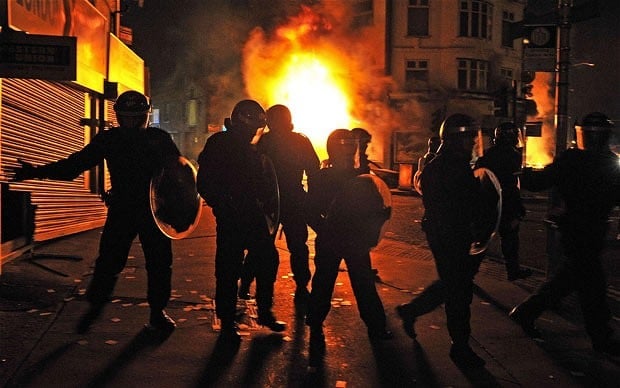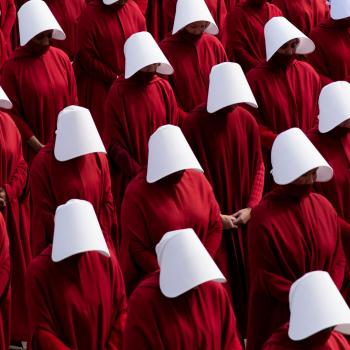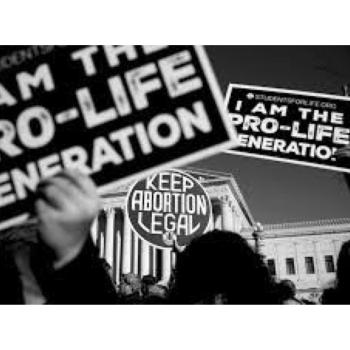
For days, the city was a disaster area. When the news broke, the bubbling magma of racial tension erupted to the surface and spewed violently out as deadly lava into the streets destroying anything and anyone in its path. Crazed men, temporarily relieved of their senses by the sudden venting of a lifetime of tamped-down trauma, wandered the streets in packs like wild, rabid dogs. Their targets were any unfortunate souls who happened to be of another race or of the upper class. They broke into buildings, looted, burned and destroyed. They beat and bludgeoned wealthy men and women and those who wore a different hue of skin. Those they didn’t beat to death, they strung up like condemned criminals. The military was brought in to bring the insurrection to a bloody end. The magma of racial tension which became the lava of violence slowly hardened on the surface leaving scars for historians to decipher. Eventually, the magma receded back beneath the surface, but down below, it simmered and gurgled still, lying dormant until the next time.
That scene may have put images in your mind of some of the riots we’ve seen in recent years. Perhaps you pictured the Baltimore riots following the death of Freddie Gray while in police custody in 2015. Or maybe your mind went to Ferguson, Missouri and the riots there in 2014 following the police shooting of Michael Brown. Some might have gone all the way back to Los Angeles in 1992 when the Rodney King case triggered severe rioting. If you are old enough, perhaps you envisioned some of the rioting that happened during the turbulent 1960s Civil Rights Movement.
Ok, now that you have those images fresh in your mind, let me tell you what I was describing. That story wasn’t any of those more recent riots I mentioned. The riot I described in the opening lines was the worst civilian insurrection in the history of the United States. It became known as the New York City Draft Riots of 1863. The participants in that riot were the poor whites of New York and the target of their anger were rich whites and free blacks. The city had a history of racial tension between the two classes lowest on the socioeconomic ladder, the poor, working-class whites and the free blacks who competed for the scraps of menial labor just to survive. When President Lincoln instituted the draft (for the first time in American history), it was the poor whites who felt the brunt of it. Rich whites could buy their way out of the draft for $300 (more like $6,000 in today’s money) and free blacks weren’t required to register for the draft because they weren’t yet considered citizens. So when the poor whites, who already felt abused and marginalized by the authorities in government, were suddenly being forced to join the fight to end slavery while all around them seemed to be avoiding such a fate, they finally snapped. For four hellish days, they raged, damaging and destroying hundreds of buildings (including an orphanage for black children), killing dozens and maiming hundreds. In the end, over 100 people died.
I used that example for a reason. Anyone, black, white, brown, yellow, blue or pink, is capable of rioting if they have felt disenfranchised, ignored, or taken advantage of long enough. The underlying cause of rioting is the same, no matter what event happens to trigger it. The riots are just symptoms, the disease is the trauma of despair. When a group of people have a history of feeling despair because of who they are, their race, their socioeconomic status, or the neighborhoods in which they live, that feeds the magma of tension that is always just below the surface. When the tectonic plates of current events shift at the wrong place or time, eruptions are inevitable.
When we look at riots on the surface, we run the risk of studying only symptoms. Riots look ridiculous. What we see is a bunch of people completely out of control and destroying their own towns. Looking at these surface events, these eruptions, they make no sense. It is easy to write them off as the act of self-destructive, savage beings. But if we seek to understand the tectonic history below the surface, the picture becomes clearer.
People don’t riot at the drop of a hat. Riots occur only after a long history of unfairness has created a culture of fear and mistrust. Then something happens and it triggers an eruption. What follows looks like mindless anarchy and chaos because, let’s not kid ourselves, that is exactly what it is while the rioting is happening. But to write it off and not examine it further only exacerbates the problem, it only illuminates symptoms and ignores the disease. What rioters are actually doing is trying to purge themselves of the disease in the rawest and most primal outpouring of despair of which humans are capable. In becoming self-destructive, savage beings, they are screaming out to be recognized. The powerless are grabbing momentary power in the only way they feel they can. In their desperate actions they are screaming, if you won’t listen to us or acknowledge our pain any other way then maybe you’ll pay attention now, damn it!
Riots are human volcanic eruptions. They are inevitable, outward manifestations of the tensions that usually lie hidden beneath the surface. And historically, they’ve been effective as catalysts for change. It should never come to the point where rioting is seen as necessary, but it often does.
We can’t do a thing about earth’s tectonics, but what about those of the human condition?
Will we ever figure out that we’ll never get any better as a society unless we learn to focus on the disease rather than symptoms?
America loves to try to treat symptoms but we hate to look at the actual disease. Addressing the disease is unpleasant. It forces us to take a long, hard look at ourselves. We don’t like doing that, so we tip-toe along the surface, just above the bubbling cauldron of tension below, hoping we won’t be at the wrong place the next time an eruption happens.












